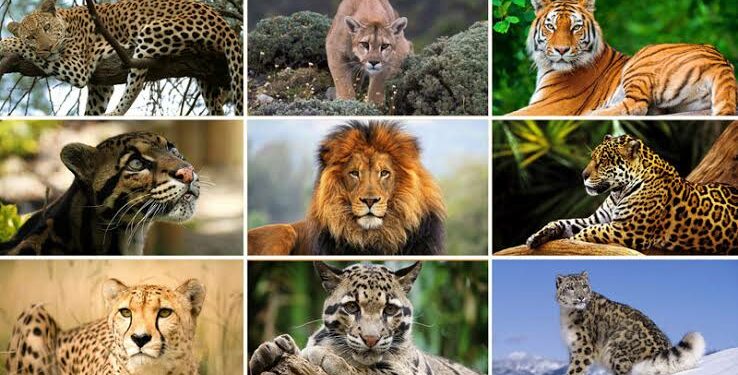A big cat’s majestic roar is a call to action as well as a representation of the wild and uncontrolled wilderness. Big cats are iconic animals that are essential to preserving the delicate balance of ecosystems. Examples of these animals include lions, tigers, leopards, and cheetahs. But these amazing animals are under unprecedented threat, and we must act quickly to protect them with coordinated conservation efforts.
The World’s Challenge: Big cats are keystone species, which means they have a disproportionately large impact on their ecosystems, in addition to being charismatic megafauna. Regretfully, they encounter many difficulties that jeopardise their ability to survive. Among the main threats are habitat loss brought on by human encroachment, poaching for their skin and bones, retaliatory killings, and the decline in prey populations.
Loss of Habitat and Fragmentation: Big cats’ natural habitats are becoming smaller due to the growth of human populations. The fragmentation of habitat caused by deforestation, urbanisation, and agricultural growth isolates populations and makes it more difficult for these animals to find safe havens, mates, and food.
Poaching and Illegal Wildlife Trade: Big cats are frequently the target of poachers who seek to obtain their valuable parts, such as teeth, bones, and skins. Their populations are seriously threatened by the illegal wildlife trade, which is driven by the demand for exotic pets, luxury items, and traditional medicine.
Conflict between Humans and Wildlife: As big cats’ habitats shrink, they come into closer contact with human settlements, which can result in conflicts. When big cats prey on livestock, there are retaliatory killings that happen because communities eradicate these predators out of fear of attacks.
Prey Depletion: Although big cats depend on a healthy base of prey, overhunting and habitat degradation can cause food shortages. This disturbs the entire ecosystem in addition to endangering big cats.
Initiatives for Conservation: Numerous programmes and organisations devoted to big cat protection have been established as a result of the urgency of big cat conservation. These initiatives cover a variety of tactics meant to deal with the underlying reasons behind their downfall.
Protected Areas and Corridor Conservation: Protecting big cat habitats requires the creation and upkeep of protected areas. Furthermore, establishing wildlife corridors to link disparate landscapes promotes genetic diversity and allows animals to travel freely between them.
Strong anti-poaching measures include enhanced technology for patrolling and monitoring, heightened law enforcement, and international collaboration to counter the illicit wildlife trade. Poachers and those involved in the trafficking of big cat parts will face harsher penalties as a result.
Community Involvement: It is crucial to include nearby communities in conservation initiatives. Developing coexistence strategies, adopting sustainable livelihoods, and teaching communities about the value of big cats all help to increase support for conservation efforts.
Research and Technology: Researchers can now study big cat behaviour, migration patterns, and population dynamics with the help of valuable data from technological advancements like camera traps and satellite tracking. Having this knowledge is essential to creating successful conservation plans.
Big cat survival is a testament to our dedication to protecting the planet’s biodiversity, not just a question of ecological balance. People, communities, and countries must come together to conserve these iconic species as we watch their numbers decline. We can guarantee that the roar of big cats in the wild will be heard for many generations to come by addressing the underlying reasons of their decline, endorsing conservation efforts, and encouraging coexistence.
Do you have a story in your community or an opinion to share with us: Email us at editorial@watchdoguganda.com













